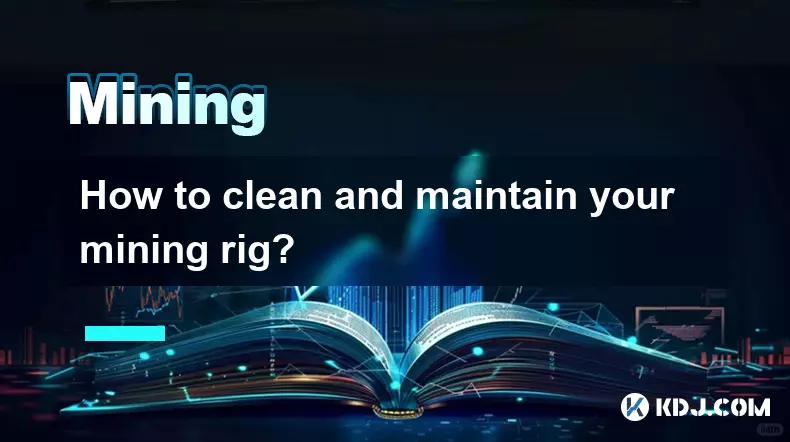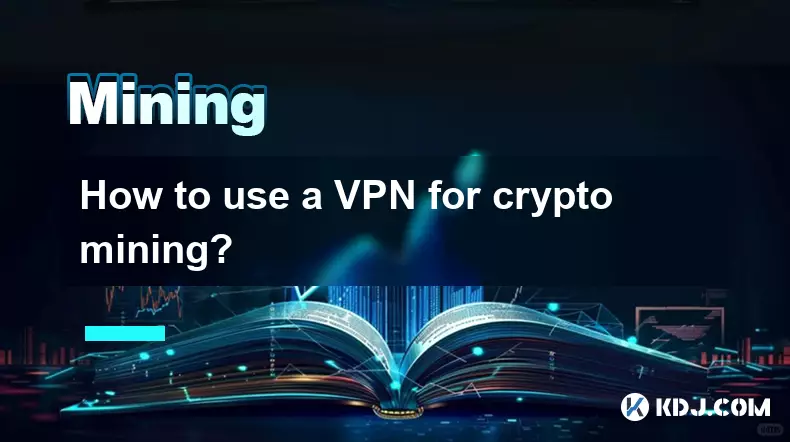-
 bitcoin
bitcoin $115178.669275 USD
3.07% -
 ethereum
ethereum $4187.145122 USD
5.98% -
 tether
tether $0.999974 USD
-0.02% -
 xrp
xrp $2.657749 USD
1.76% -
 bnb
bnb $1143.755467 USD
1.88% -
 solana
solana $204.642189 USD
5.78% -
 usd-coin
usd-coin $0.999808 USD
-0.01% -
 dogecoin
dogecoin $0.207825 USD
5.98% -
 tron
tron $0.300913 USD
1.42% -
 cardano
cardano $0.687188 USD
5.24% -
 hyperliquid
hyperliquid $48.081828 USD
8.50% -
 chainlink
chainlink $18.790575 USD
4.94% -
 bitcoin-cash
bitcoin-cash $558.997512 USD
8.92% -
 stellar
stellar $0.333150 USD
2.01% -
 ethena-usde
ethena-usde $0.999206 USD
0.00%
How to set up dual mining for two cryptocurrencies?
Dual mining allows simultaneous cryptocurrency mining on compatible algorithms, maximizing GPU efficiency and profitability with proper hardware, software, and pool configuration.
Oct 26, 2025 at 09:18 pm

Understanding Dual Mining in Cryptocurrency
1. Dual mining refers to the process of simultaneously mining two different cryptocurrencies using the same hardware setup. This approach maximizes the utilization of GPU or ASIC resources by allocating computational power across multiple blockchains. Miners often combine a primary coin with a secondary one that requires less intensive algorithms, allowing both processes to run efficiently without significant performance loss.
2. The concept relies on compatible mining software that supports dual algorithms. For instance, miners can run Ethereum (Ethash) alongside Ravencoin (KawPow), as some mining platforms allow this combination due to similar memory and processing demands. Compatibility between algorithms is essential; mismatched workloads may lead to instability or reduced hash rates.
3. Not all coins are suitable for dual mining. The selection depends on algorithm synergy, profitability, and network difficulty. Coins like Beam, Zilliqa, and Ergo have been popular secondary options because they use lightweight proof-of-work mechanisms that don’t overwhelm the system when paired with heavier primary chains.
4. Profitability calculators play a crucial role in determining whether dual mining is worthwhile. These tools analyze current market prices, block rewards, electricity costs, and estimated hash rates to project earnings from both coins. Miners must regularly monitor these metrics as fluctuations in either cryptocurrency’s value can shift the balance of returns.
5. Stable internet connectivity and reliable power supply are critical for maintaining consistent dual mining operations. Any interruption can result in lost shares and reduced payouts from both networks.
Selecting Compatible Hardware and Software
1. High-performance GPUs such as NVIDIA RTX 3070, 3080, or AMD RX 6700 XT are commonly used for dual mining due to their memory bandwidth and parallel processing capabilities. These cards support multiple algorithm executions with minimal throttling when properly configured.
2. Mining software like T-Rex, NBMiner, and GMiner offer built-in dual mining modes. Each platform provides configuration files where users define primary and secondary coin parameters, pool addresses, wallet keys, and intensity settings. Proper setup ensures smooth communication between the miner and both blockchain networks.
3. BIOS modifications on graphics cards can enhance efficiency during dual mining. Adjustments such as undervolting, increasing memory clock speeds, and optimizing fan curves help maintain lower temperatures and reduce power draw while sustaining high hash rates.
4. Operating systems like HiveOS or SimpleMining OS simplify management of multi-GPU rigs. These Linux-based platforms include web dashboards that display real-time statistics for each card and both mining streams, enabling quick troubleshooting and tuning adjustments.
5. Always verify driver compatibility before launching dual mining sessions. Outdated or incorrect drivers can cause crashes, rejected shares, or failure to detect secondary algorithms.
Configuring Pools and Wallets for Dual Output
1. Miners must create accounts with mining pools that support dual algorithms. Examples include Flypool, Nanopool, and 2Miners, which accept submissions for both Ethash and KawPow or similar combinations. Registration typically involves providing a valid wallet address for each coin being mined.
2. Separate wallets are required for each cryptocurrency. For example, an Ethereum wallet (like MetaMask) handles ETH rewards, while a dedicated Ravencoin wallet stores RVN earnings. Mixing addresses can lead to irreversible fund loss if sent to incompatible networks.
3. Configuration files need precise syntax to direct hashrate splits. A typical command line might specify “--dual-mode ravn” to activate Ravencoin mining alongside Ethereum, along with corresponding pool URLs and worker names. Errors in formatting can prevent connection or disable one of the mining threads.
4. Monitoring tools integrated into pool dashboards show accepted and rejected shares for both coins. Regular checks ensure neither chain experiences excessive stale submissions, which could indicate latency issues or insufficient bandwidth allocation.
5. Enable automatic payout thresholds based on minimum balance requirements to avoid transaction fees eating into profits from smaller reward amounts.
Frequently Asked Questions
What happens if one of the mining pools goes offline?If the primary pool disconnects, most dual mining software will halt both operations unless fallback servers are specified in the config file. Secondary mining usually depends on the stability of the main connection, so redundancy planning is necessary.
Can I split my rig to mine two separate dual setups?Yes, individual GPUs within a single rig can be assigned different dual mining configurations through advanced scripting. However, this increases complexity and requires careful resource allocation to prevent memory contention or thermal overload.
Do ASIC miners support dual mining?Most ASIC devices are designed for a single algorithm and do not support dual mining. Their architecture focuses on maximizing efficiency for one specific hashing function, making them incompatible with simultaneous multi-algorithm execution.
How are taxes handled when earning two different cryptocurrencies?Each mined coin is considered taxable income at its fair market value on the date of receipt. Miners must track the value and quantity of both assets independently and report them according to local regulations, often requiring detailed transaction logs and wallet records.
Disclaimer:info@kdj.com
The information provided is not trading advice. kdj.com does not assume any responsibility for any investments made based on the information provided in this article. Cryptocurrencies are highly volatile and it is highly recommended that you invest with caution after thorough research!
If you believe that the content used on this website infringes your copyright, please contact us immediately (info@kdj.com) and we will delete it promptly.
- Essex Post Office, 5p Coins, and King Charles: A Royal Mint Revelation!
- 2025-10-23 10:30:16
- Waymo's Newark Airport AV Tests: Alphabet's AI Gamble Pays Off?
- 2025-10-23 10:30:16
- King Charles 5p Coins: A Royal Flush in Your Pocket?
- 2025-10-23 10:35:18
- Solana, Crypto Advisory, and Forward Industries: A New York Minute on the Future of Finance
- 2025-10-23 08:51:22
- MAGACOIN: Ethereum Whales Dive into the Hottest Presale of 2025
- 2025-10-23 08:51:22
- Kadena's End of the Road? KDA Token Plummets Amid Project Abandonment
- 2025-10-23 08:55:34
Related knowledge

How to build a crypto mining rig step-by-step?
Oct 26,2025 at 08:18am
Choosing the Right Hardware Components1. Select a high-performance graphics processing unit (GPU) that offers strong hash rates for your chosen crypto...

How to set up a Chia (XCH) farming plot?
Oct 26,2025 at 03:20am
Understanding Chia Farming and Its Requirements1. Chia (XCH) operates on a unique consensus mechanism known as Proof of Space and Time, differing from...

How to choose the correct GPU risers?
Oct 27,2025 at 05:19am
Understanding the Role of Decentralized Exchanges in Modern Cryptocurrency Trading1. Decentralized exchanges (DEXs) have become a cornerstone of crypt...

How to set power limits for your GPUs?
Oct 26,2025 at 08:00am
Understanding Market Volatility in the Crypto Space1. Cryptocurrency markets are known for their extreme price fluctuations, often driven by sentiment...

How to clean and maintain your mining rig?
Oct 26,2025 at 08:01pm
Cleaning Dust and Debris from Your Mining Rig1. Power down the mining rig completely and disconnect it from all power sources to ensure safety during ...

How to use a VPN for crypto mining?
Oct 25,2025 at 06:01pm
Understanding the Role of a VPN in Crypto Mining1. A Virtual Private Network (VPN) creates an encrypted tunnel between your device and a remote server...

How to build a crypto mining rig step-by-step?
Oct 26,2025 at 08:18am
Choosing the Right Hardware Components1. Select a high-performance graphics processing unit (GPU) that offers strong hash rates for your chosen crypto...

How to set up a Chia (XCH) farming plot?
Oct 26,2025 at 03:20am
Understanding Chia Farming and Its Requirements1. Chia (XCH) operates on a unique consensus mechanism known as Proof of Space and Time, differing from...

How to choose the correct GPU risers?
Oct 27,2025 at 05:19am
Understanding the Role of Decentralized Exchanges in Modern Cryptocurrency Trading1. Decentralized exchanges (DEXs) have become a cornerstone of crypt...

How to set power limits for your GPUs?
Oct 26,2025 at 08:00am
Understanding Market Volatility in the Crypto Space1. Cryptocurrency markets are known for their extreme price fluctuations, often driven by sentiment...

How to clean and maintain your mining rig?
Oct 26,2025 at 08:01pm
Cleaning Dust and Debris from Your Mining Rig1. Power down the mining rig completely and disconnect it from all power sources to ensure safety during ...

How to use a VPN for crypto mining?
Oct 25,2025 at 06:01pm
Understanding the Role of a VPN in Crypto Mining1. A Virtual Private Network (VPN) creates an encrypted tunnel between your device and a remote server...
See all articles










































































